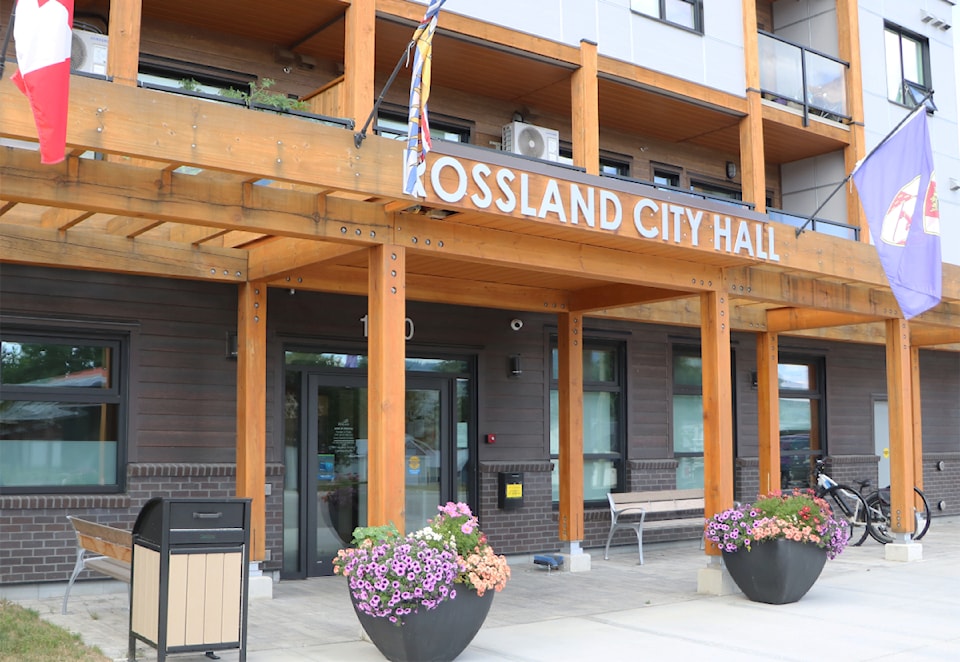The B.C. Environmental Assessment Office (EAO) has concluded that an environmental assessment of the proposed Record Ridge mineral mine outside of Rossland is not required.
On August 19, the EAO's chief executive assessment officer Alex MacLennan said that West High Yield (WHY) Resources' proposed open-pit magnesium mine "does not meet the threshold to automatically require an environmental assessment."
The EAO acknowledged applications submitted by the Sinixt Confederacy and Save Record Ridge Action Committee that asked to designate the project as reviewable.
MacLennan deemed the environmental review unnecessary, but said that WHY must still obtain all necessary permits and other applicable approvals from other regulatory agencies for the project to proceed.
The decision was not well received by many proponents including the Sinixt Confederacy and the Confederated Tribes of the Colville Reservation.
“This decision denies us a voice in the future of our land,” said Sinixt chairman Jarred-Michael Erickson. “The proposed Record Ridge Mine could impact our water, wildlife, and cultural sites. We asked for a proper process to assess those risks and to be part of the discussion.
"The Province has said, 'No!'”
The Sinixt are not alone in their support for an environmental assessment. The Ktunaxa Nation Council, Splats' in, and Shuswap Band also supported the call for an assessment, along with the City of Rossland, the Regional District of Kootenay Boundary (RDKB), and Environment and Climate Change Canada.
As a member of the Record Ridge Mining Development Review Committee (MDRC), Rossland council made it clear it did not support the project.
In a March letter to MDRC Chair Kathie Wagar, Rossland Mayor Andy Morel listed several key concerns he said have not been addressed by the project proponent.
Mayor Morel noted that critical issues include the project’s potential socioeconomic impact, transportation effects, environmental risks, and the transparency of the company behind the proposal.
Chief Clarence Louie of the Osoyoos Indian Band, however, welcomed the decision, along with partner WHY Resources president and CEO, Frank Marasco Jr.
"We are pleased that the Environmental Assessment Office respected the opinion of the Osoyoos Indian Band and has allowed the project to proceed," said Louie in a release. "We look forward to working with the leadership of West High Yield to ensure this project is of the highest standards in keeping with the traditions and expectations of our people."
The Osoyoos Indian Band signed a cooperation agreement with WHY Resources that assures the Band's oversight of the open-pit mineral mine project.
WHY Resources altered the mine's potential production capacity from 200,000 to 63,500 tonnes per year to slip below 75,000 tonnes - the province's Reviewable Projects Regulation (RPR) threshold for a new mineral mine.
MacLennan said the EAO decision considered the threshold alongside other features of Record Ridge, including a relatively small footprint.
According to WHY Resources proposal, operations will be limited to eight months of the year, with an anticipated workforce of 30-40 people, and will lack infrastructure such as a mill and tailings storage facility that is typical of major metal mining facilities.
"We are extremely pleased with the EAO's Final Designation Decision, which validates the rigorous review our project has already undergone through the Mine Development Review Committee process led by the BC Ministry of Mining and Critical Minerals," said Marasco. "This outcome provides the clarity and certainty we need to advance toward final permitting and development of the project."
Under Section 11 of the Environmental Assessment Act, Save Record Ridge and the Sinixt formally applied for the project to be designated for review.
The Sinixt expressed concern that the mine will pose serious environmental risks that could affect ungulate habitat sacred to Sinixt hunting and cultural practices; harm water quality and fish populations; disturb red-listed species and ecologically sensitive areas; and affect archaeological and cultural sites.
According to the Sinixt, the Record Ridge decision follows a concerning pattern in how the Province is choosing to exclude the Sinixt from key environmental and land-use decisions in areas with significant ecological, cultural, and spiritual importance.
The Province's recent decision that the Zincton All-Season Resort in the Slocan did not require an environmental assessment raised serious concerns from the Sinixt and several other First Nations.
"We've been caretakers of this land for thousands of years,” said Erickson. "Yet we continue to be excluded from decisions that affect the future of our own territory.
"That is not reconciliation; that is erasure.”
While many are disappointed with the EAO decision, WHY Resources has been dogged in its determination. The company has altered the business proposal several times as needed, and invested two decades of time, work, and money in pursuit of this result.
"We remain committed to building a sustainable operation that delivers critical minerals for Canada while protecting the environment and creating lasting benefits for local communities and Indigenous partners," added Marasco.
According to its proponents, the Record Ridge mineral mine is a unique Canadian source of critical minerals, with a focus on magnesia (MgO) and silica (SiO2) products, both recognized as strategic and essential to the clean energy transition and a low-carbon economy.
Visit Record Ridge decision at EPIC - .



